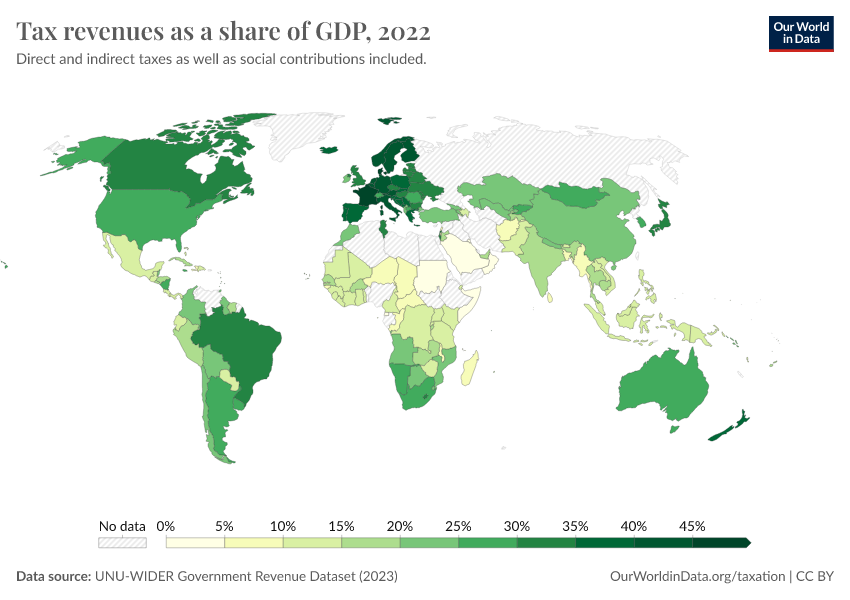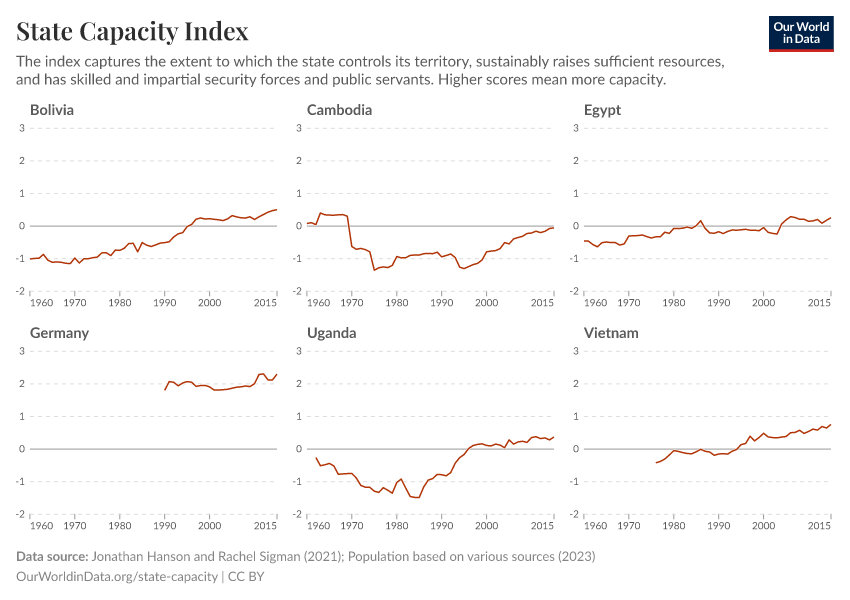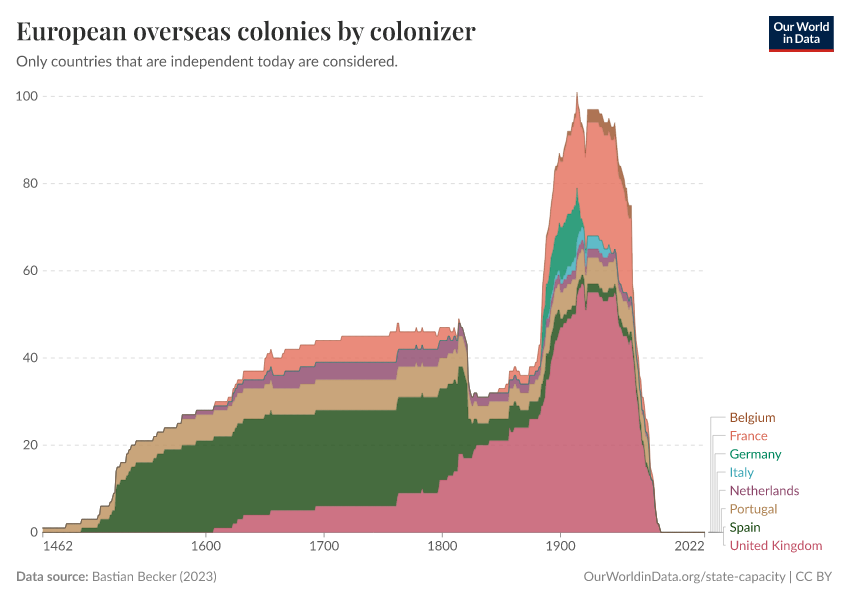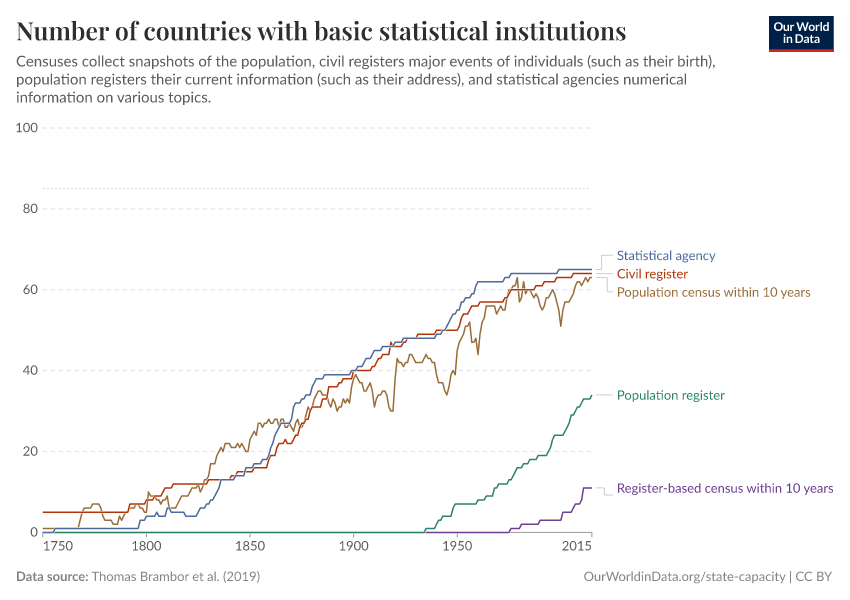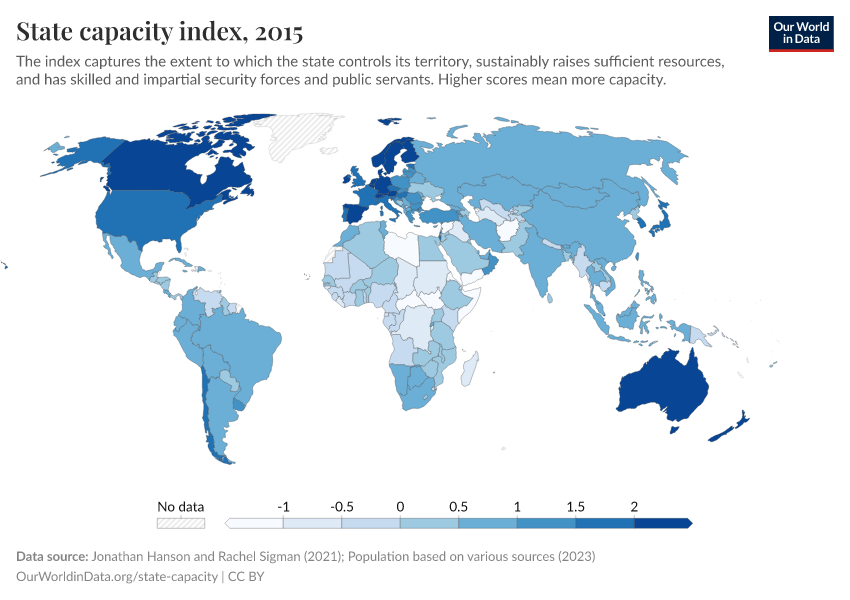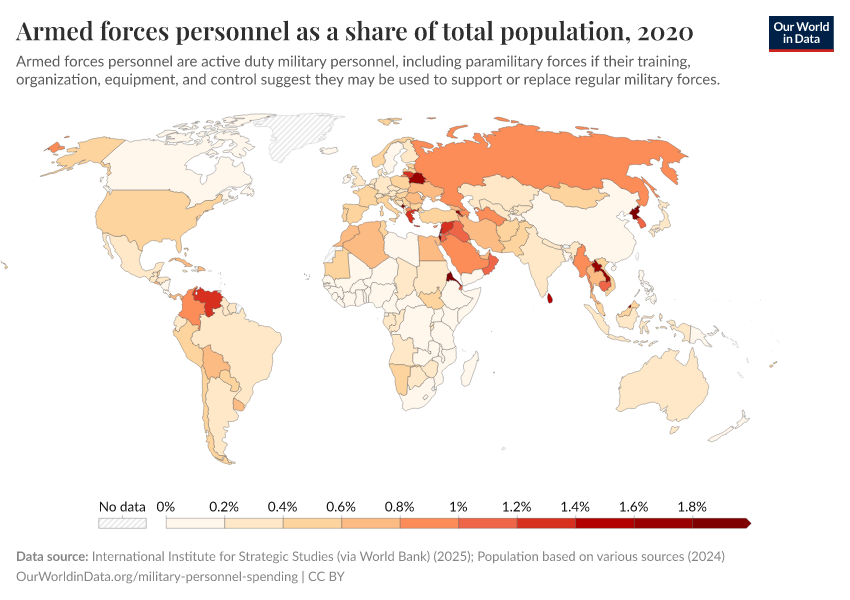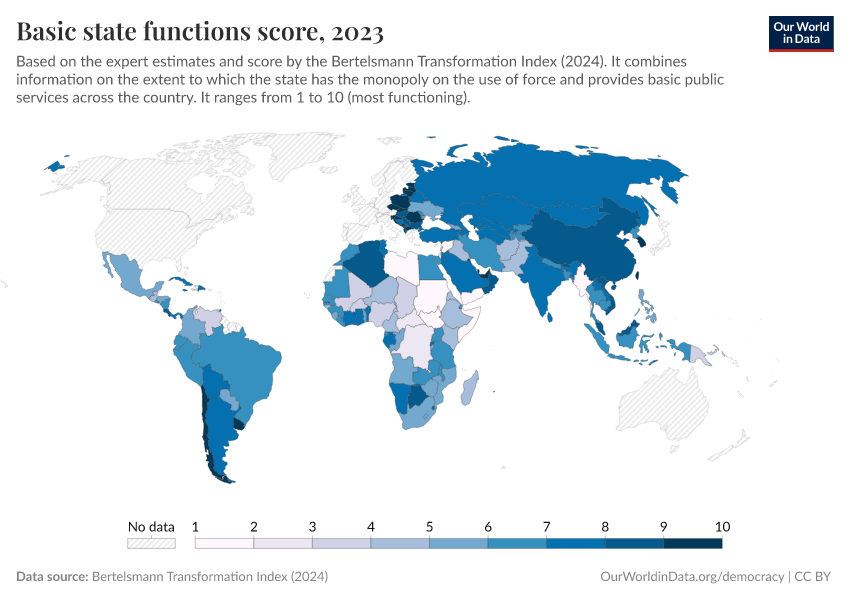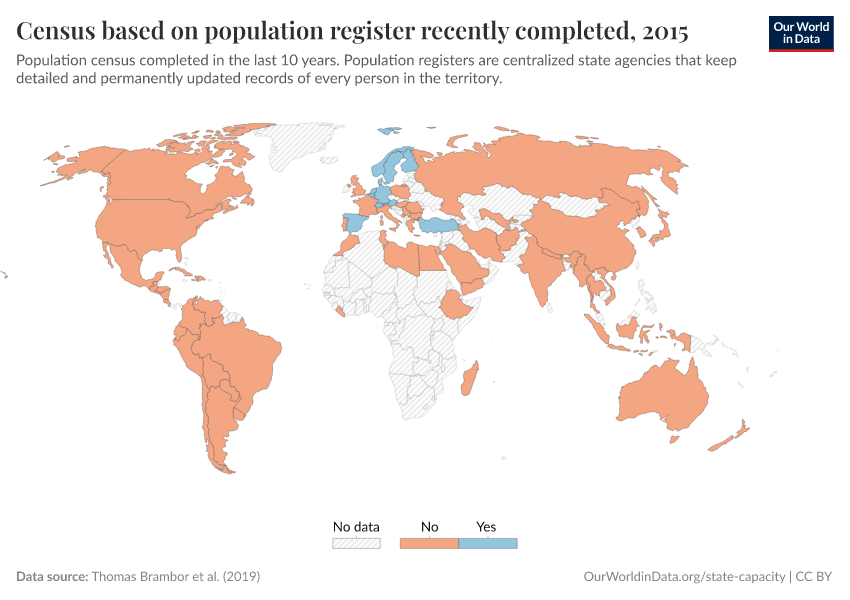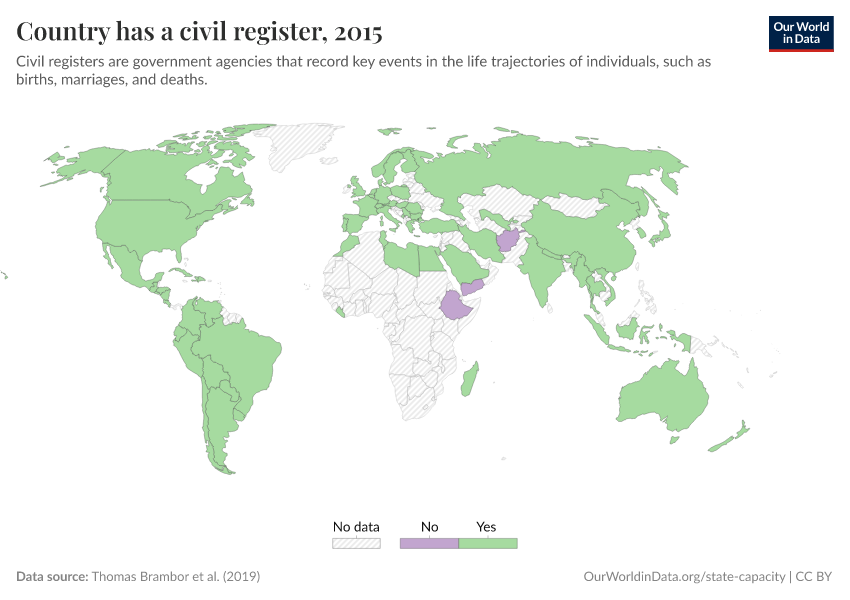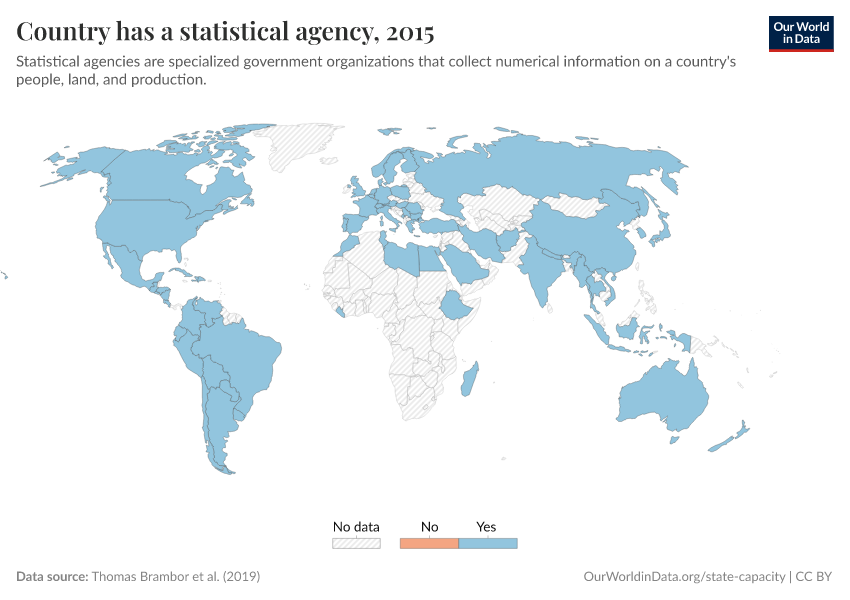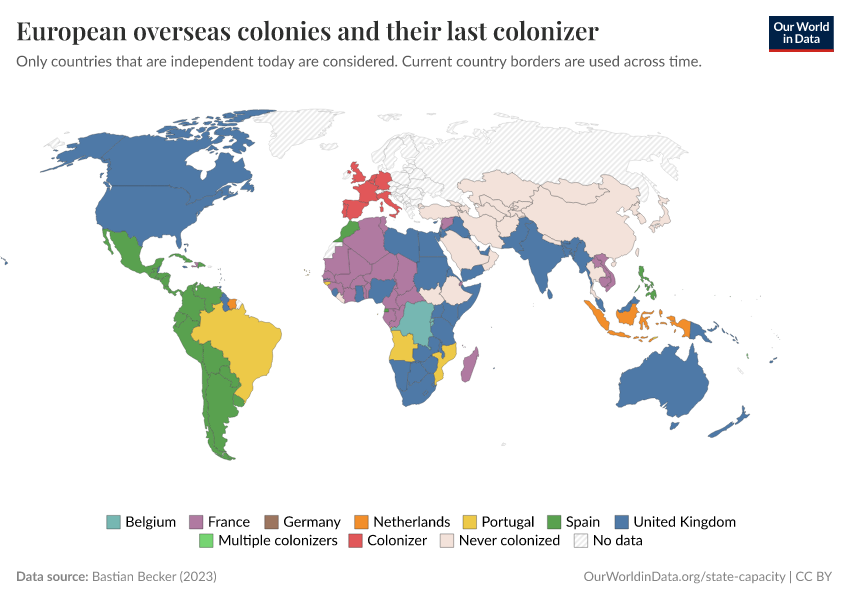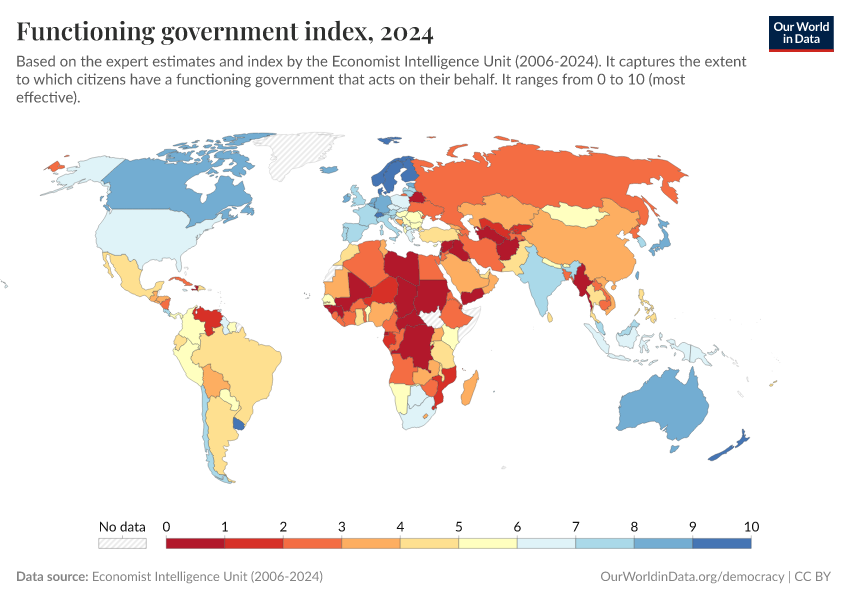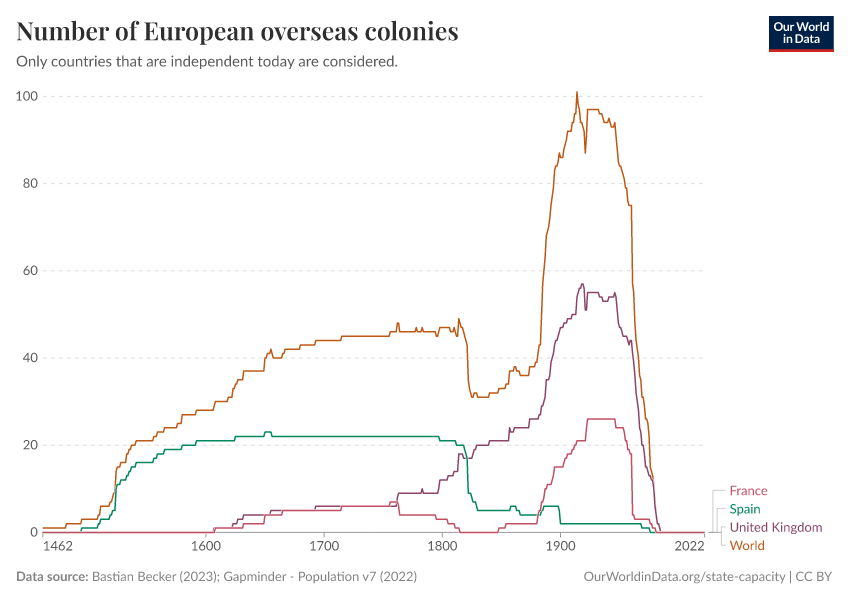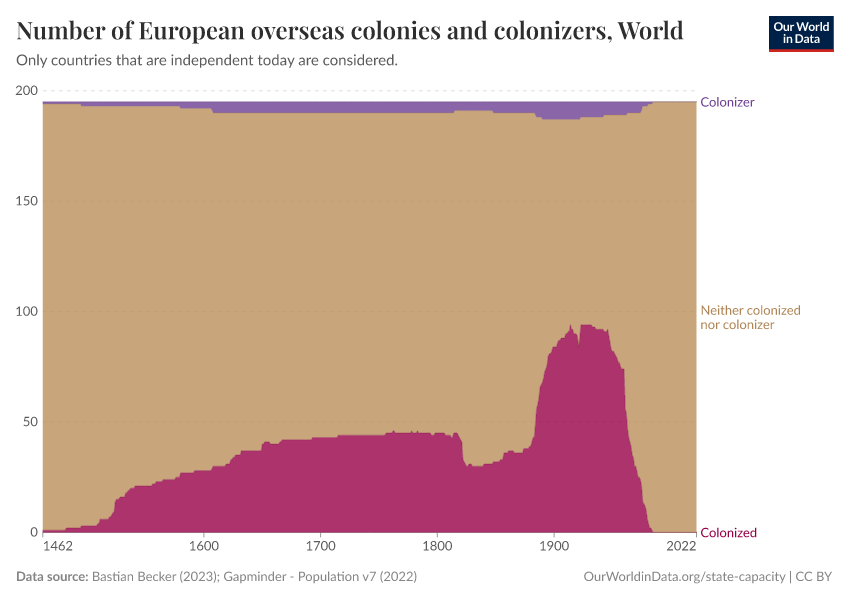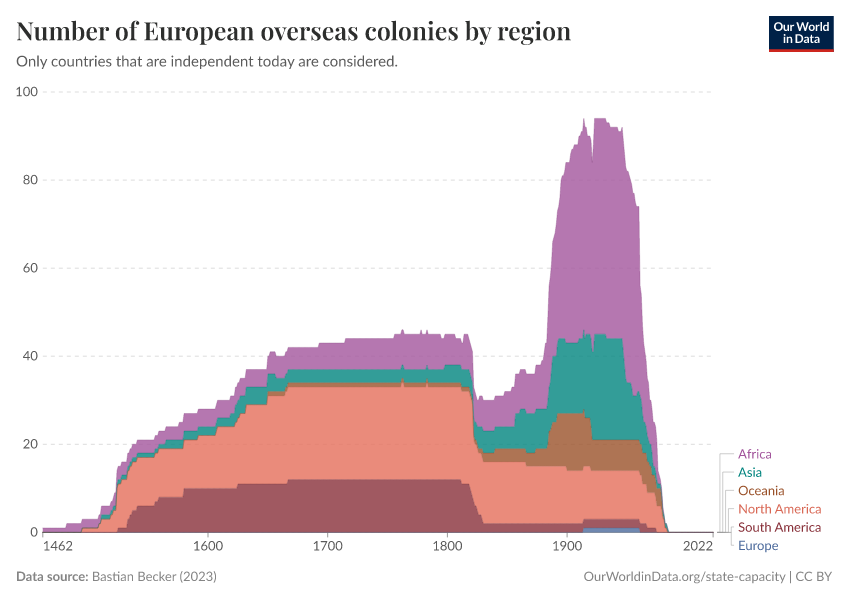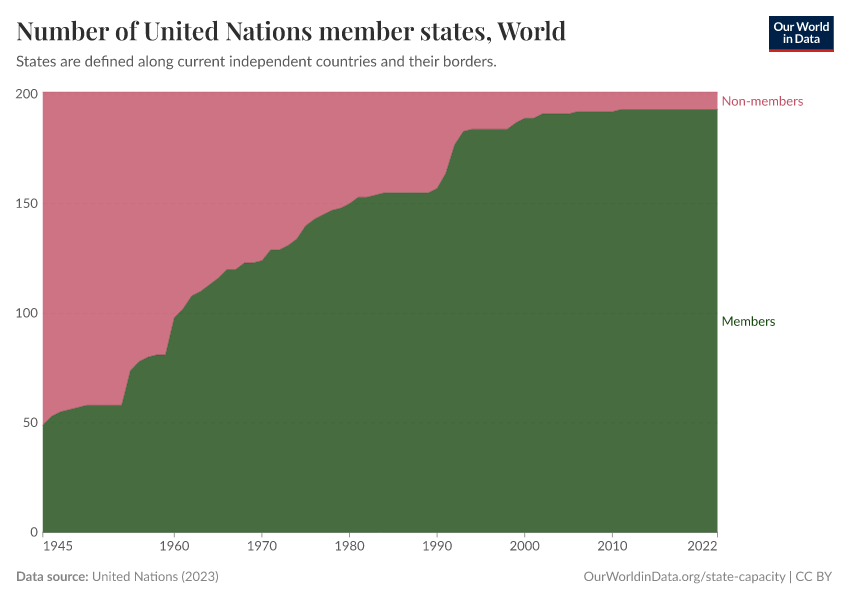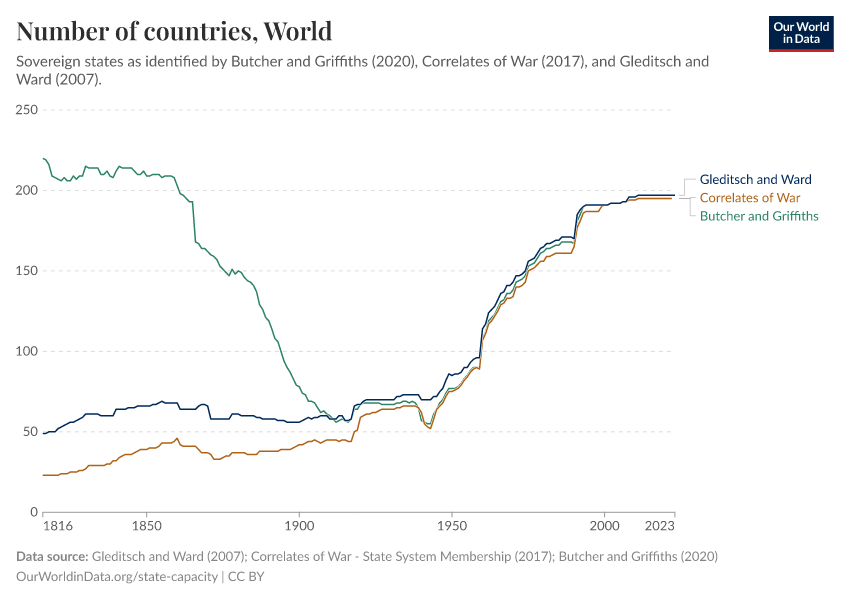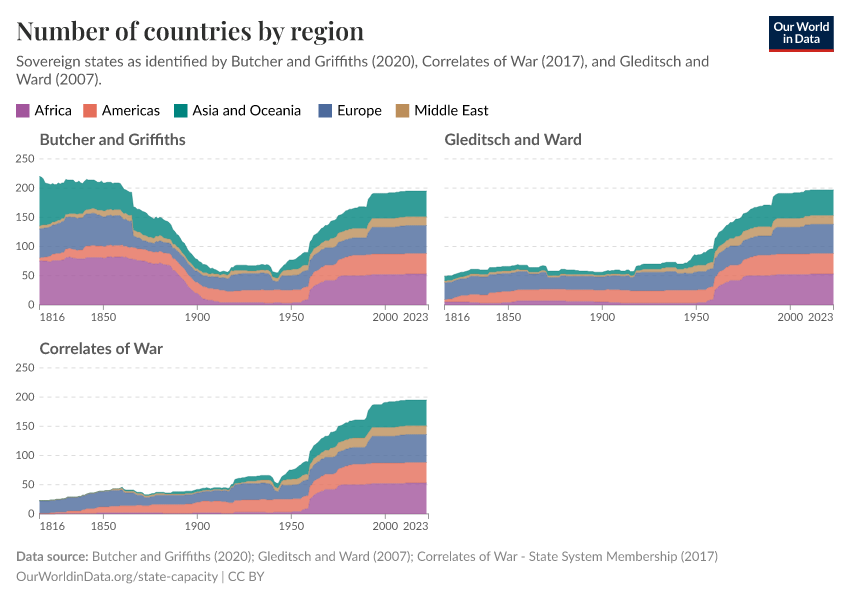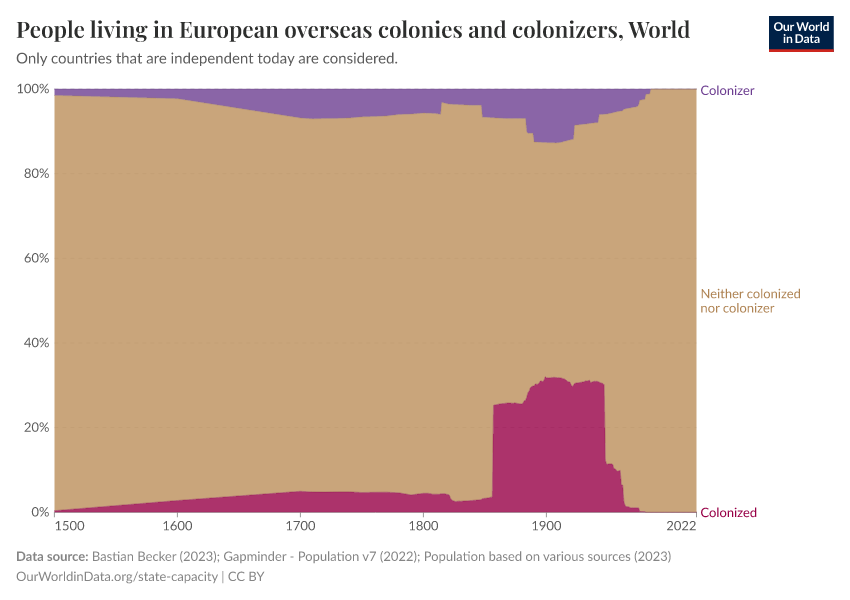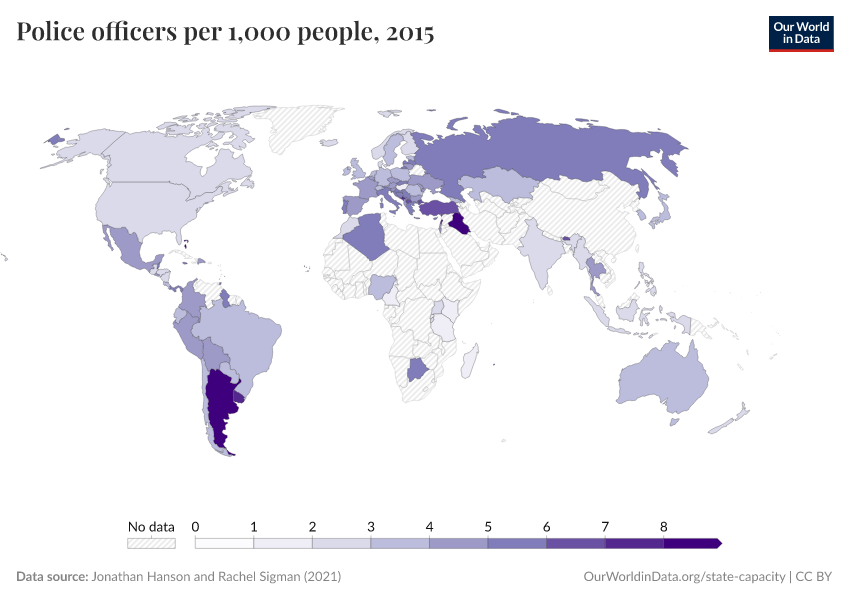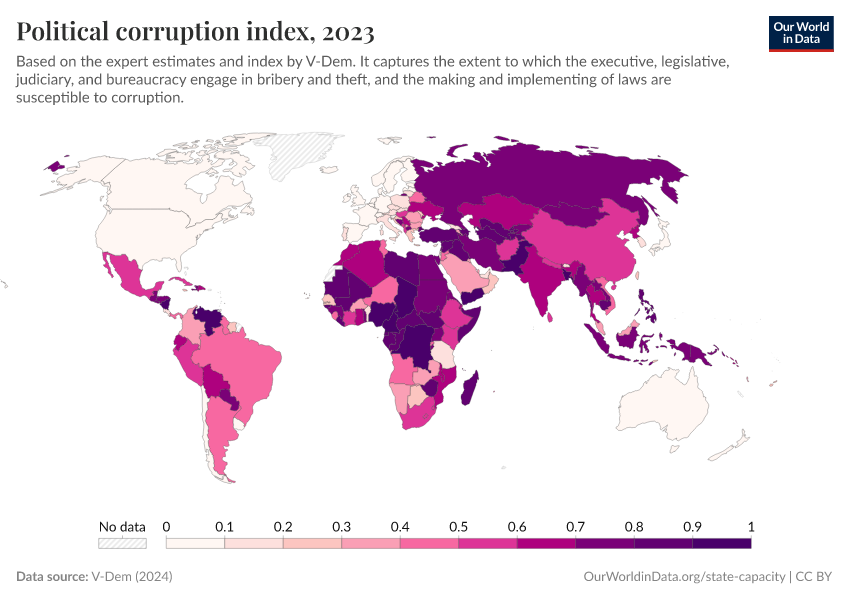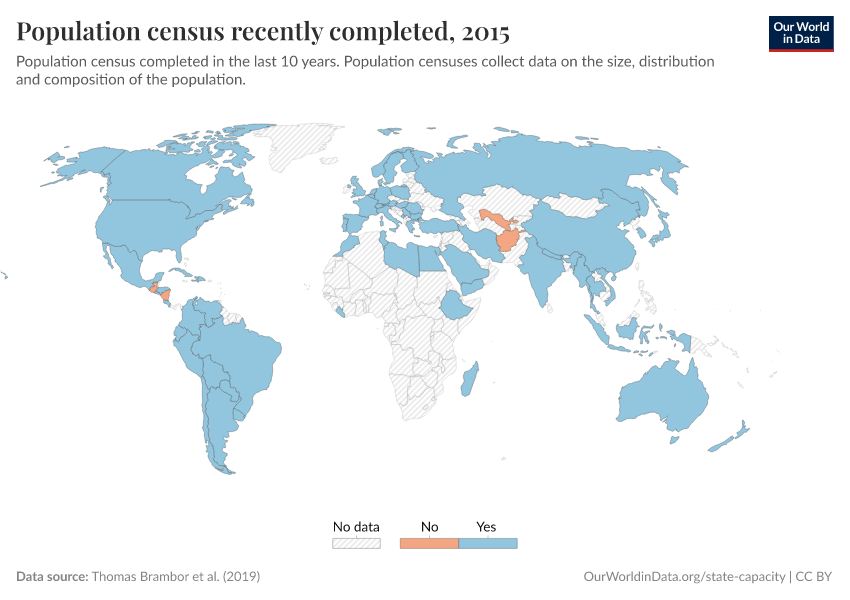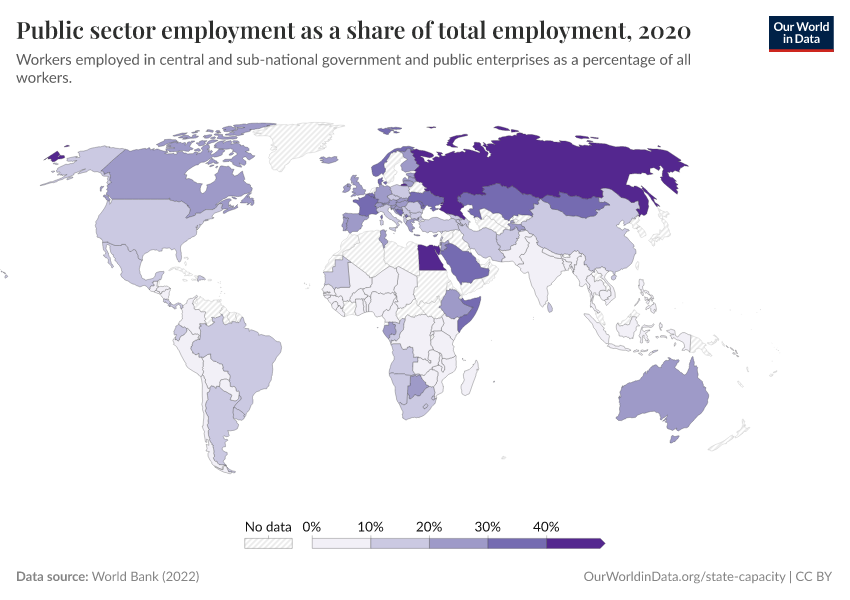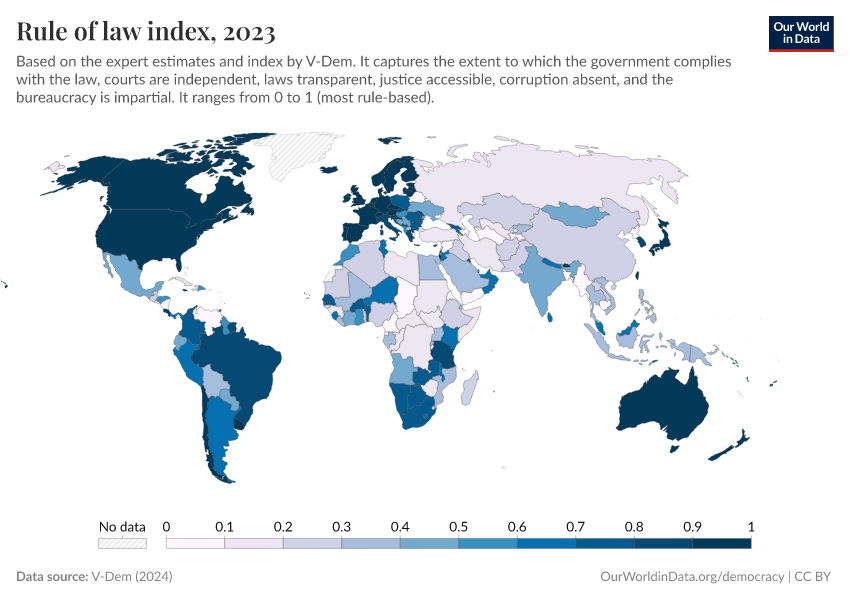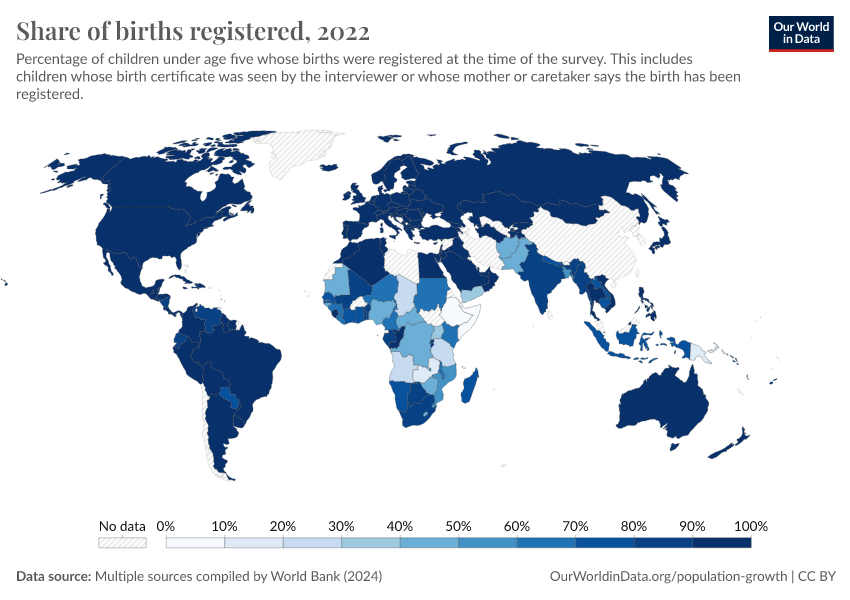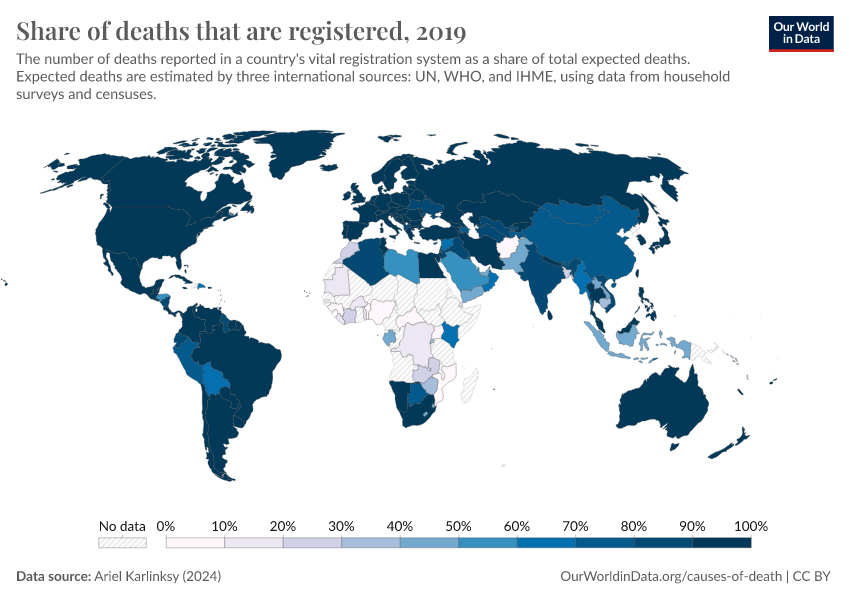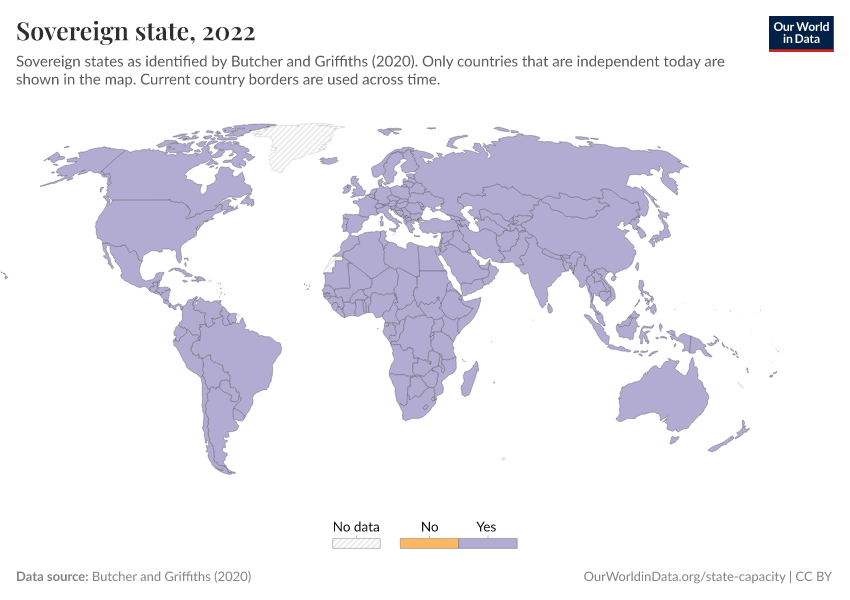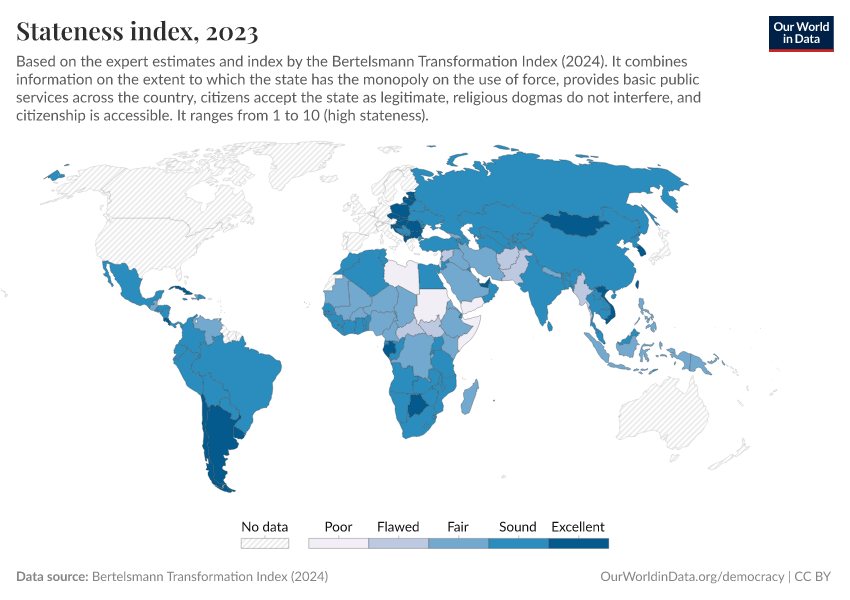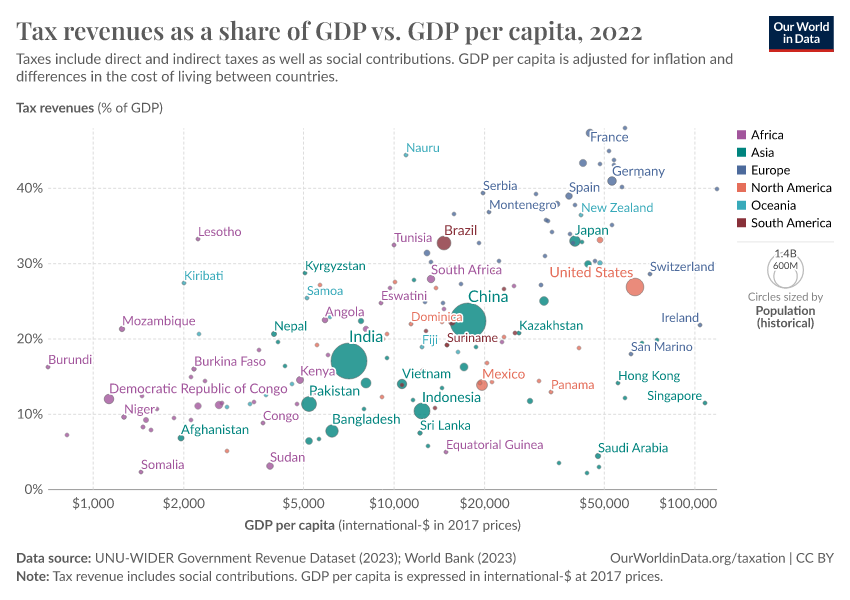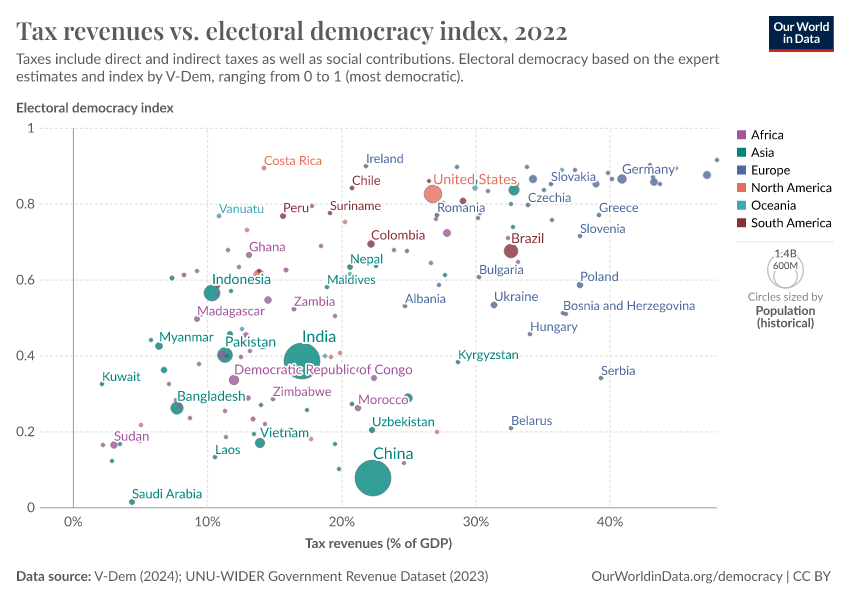State Capacity
Do governments worldwide have the ability to implement their policies? How has this changed over time?
State capacity is the ability of governments to effectively implement their policies and achieve their goals.
The goals of governments vary a lot, and some governments are much more ambitious than others. However, they typically include protecting their citizens against internal and external threats and encouraging economic activity.
The policies they pursue to achieve these goals range from keeping other governments from interfering in their actions, disarming other violent actors within their territory, upholding the rule of law, and providing infrastructure and other public goods.
To do that, states must sustainably raise sufficient resources, usually by collecting taxes; hire skilled and impartial security forces and public servants; and gather accurate information about their populations, among other things.
Understanding state capacity is crucial because it shapes a country's ability to address its many challenges. On this page, you can find related data and visualizations on how state capacity differs around the globe and how this has been changing over time.
Key Charts on State Capacity
See all charts on this topicAcknowledgements
We thank Javier Fuenzalida and Anna Petherick for their very helpful suggestions and ideas.
Endnotes
UNU-WIDER Government Revenue Dataset. Version 2023. https://doi.org/10.35188/UNU-WIDER/GRD-2023
Coppedge, Michael, John Gerring, Carl Henrik Knutsen, Staffan I. Lindberg, Jan Teorell, David Altman, Michael Bernhard, Agnes Cornell, M. Steven Fish, Lisa Gastaldi, Haakon Gjerløw, Adam Glynn, Ana Good God, Sandra Grahn, Allen Hicken, Katrin Kinzelbach, Joshua Krusell, Kyle L. Marquardt, Kelly McMann, Valeriya Mechkova, Juraj Medzihorsky, Natalia Natsika, Anja Neundorf, Pamela Paxton, Daniel Pemstein, Josefine Pernes, Oskar Rydén, Johannes von Römer, Brigitte Seim, Rachel Sigman, Svend-Erik Skaaning, Jeffrey Staton, Aksel Sundström, Eitan Tzelgov, Yi-ting Wang, Tore Wig, Steven Wilson and Daniel Ziblatt. 2023. V-Dem [Country-Year/Country-Date] Dataset v13. Varieties of Democracy (V-Dem) Project.
Hanson, Jonathan and Rachel Sigman. 2021. Leviathan's Latent Dimensions: Measuring State Capacity for Comparative Political Research. Journal of Politics 83(4): 1495-1510.
Becker, Bastian. 2019. Introducing COLDAT: The Colonial Dates Dataset. SOCIUM/SFB1342 Working Paper Series, 02/2019
Cite this work
Our articles and data visualizations rely on work from many different people and organizations. When citing this topic page, please also cite the underlying data sources. This topic page can be cited as:
Bastian Herre and Pablo Arriagada (2023) - “State Capacity” Published online at OurWorldinData.org. Retrieved from: 'https://ourworldindata.org/state-capacity' [Online Resource]BibTeX citation
@article{owid-state-capacity,
author = {Bastian Herre and Pablo Arriagada},
title = {State Capacity},
journal = {Our World in Data},
year = {2023},
note = {https://ourworldindata.org/state-capacity}
}Reuse this work freely
All visualizations, data, and code produced by Our World in Data are completely open access under the Creative Commons BY license. You have the permission to use, distribute, and reproduce these in any medium, provided the source and authors are credited.
The data produced by third parties and made available by Our World in Data is subject to the license terms from the original third-party authors. We will always indicate the original source of the data in our documentation, so you should always check the license of any such third-party data before use and redistribution.
All of our charts can be embedded in any site.
